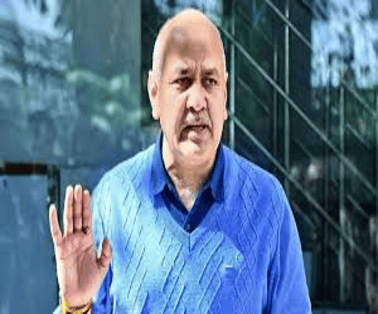The India trade deficit, or the gap between imports and exports, has continued to be a challenge in the fiscal year 2023–24. India recorded a trade deficit with nine of its top ten trading partners, including China, Russia, South Korea, Singapore, and Hong Kong. Only the United States stood out as a nation with which India maintained a trade surplus.
Despite several policy efforts, the trade imbalance highlights India’s reliance on imports, particularly in energy, electronics, and capital goods.
Key Highlights of India Trade Deficit (2023–24)
- The trade deficit with China rose to $85 billion, up from $83.2 billion in 2022–23.
- India’s deficit with Russia expanded significantly to $57.2 billion, primarily due to increased oil imports.
- Trade deficits with Korea ($14.71B) and Hong Kong ($12.2B) also widened.
- However, the deficit with UAE, Saudi Arabia, Russia, Indonesia, and Iraq narrowed slightly.
- India’s overall trade deficit for 2023–24 narrowed to $238.3 billion, compared to $264.9 billion in 2022–23.
India’s Top Trading Partners: Imports vs. Exports
In 2023–24, China overtook the U.S. as India’s largest trading partner, with bilateral trade amounting to $118.4 billion. Meanwhile, trade with the U.S. totaled $118.28 billion, making it the second-largest partner.
| Country | Trade Status | Remarks |
| China | $85B deficit | Electronics, machinery dominate imports |
| Russia | $57.2B deficit | Crude oil and defense imports |
| South Korea | $14.71B deficit | Electronics and intermediates |
| Hong Kong | $12.2B deficit | High-value imports continue |
| USA | $36.74B surplus | India’s largest export destination |
India also maintained trade surpluses with Bangladesh, UK, France, Belgium, and Italy, helping to partially offset deficits elsewhere.
What is a Trade Deficit?
A trade deficit occurs when a country’s imports exceed its exports. In the context of the India trade deficit, it reflects the country’s increased consumption of foreign goods and reliance on global supply chains.
Trade Deficit Formula:
Trade Deficit = Total Imports – Total Exports
While often seen as a negative indicator, a trade deficit can also imply investment in production, industrial expansion, or consumer demand—especially when importing capital goods and raw materials.
India’s Major Exports and Imports
Top Indian Exports
- Refined Petroleum – $86.2B
- Diamonds – $25.9B
- Medicaments – $19.5B
- Jewellery – $12.6B
- Rice – $11.1B
Top Export Destinations
- United States – $82.9B
- UAE – $31.6B
- Netherlands – $17.6B
- China – $15.3B
- Bangladesh – $13.8B
Top Indian Imports
- Crude Petroleum – $170B
- Coal Briquettes – $58.7B
- Gold – $35.8B
- Petroleum Gas – $32B
- Diamonds – $26.1B
Top Import Sources
- China – $110B
- UAE – $51B
- USA – $48.5B
- Saudi Arabia – $46.2B
- Russia – $40.4B
This data reveals why the India trade deficit with China and Russia has become so prominent.
Why Is India’s Trade Deficit Rising?
Causes:
- High dependence on crude oil and energy imports
- Limited domestic production of key technology and machinery
- Strong consumer demand for foreign goods
- Rupee depreciation, making imports costlier
Is the India Trade Deficit Always Bad?
Not necessarily. A moderate trade deficit can be a sign of economic expansion if imports are used to fuel manufacturing or infrastructure.
Pros:
- Ensures availability of essential goods
- Enables technological upgrades through imports
- Helps focus on sectors with comparative advantage
Cons:
- Weakens rupee value due to foreign currency outflow
- May lead to external debt accumulation
- Over-dependence on foreign countries for critical supplies
- Can reduce investor confidence if persistent
Measures to Reduce India Trade Deficit
India is implementing several strategic steps to curb its trade imbalance:
-
Boosting Exports
- MEIS (Merchandise Exports from India Scheme) – Incentives to exporters
- RoDTEP – Refund of embedded duties and taxes
- EPCG Scheme – Duty-free capital goods for production
- Interest Equalization Scheme – Lower borrowing costs for exporters
-
Reducing Unnecessary Imports
- Focus on domestic manufacturing through schemes like Make in India and PLI (Production-Linked Incentives)
- Promotion of import substitution industries
-
Leveraging Trade Agreements
- Free Trade Agreements with key partners like UAE, Singapore, Korea, and Indonesia
- Launch of Common Digital Platform for Certificate of Origin to ease export processes and improve FTA utilization
Conclusion
The India trade deficit with top nations continues to be a key economic challenge in 2023–24, despite a reduction in the overall deficit compared to last year. Addressing this imbalance requires a mix of export promotion, domestic production strengthening, and strategic import regulation.
While deficits with countries like China and Russia persist, India’s surplus with the U.S. and other partners offers hope. With the right policy focus, India can gradually reduce its trade gap and strengthen its global trade position.
To Download Monthly Current Affairs PDF Click here
Click here to get a free demo
Discover all about CLAT Exam



